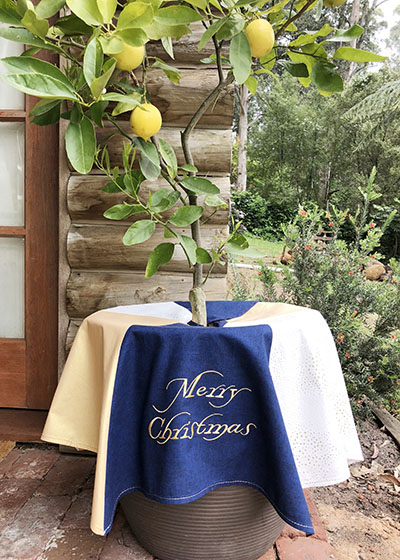It all began for Lisa Dopking when she first discovered the wonders of teddy bear making in the mid-eighties. Over the years as Lisa perfected her bear making skills, her artist bears grew in popularity. It wasn’t long before she was asked to teach the craft, and make and sell patterns.
On our Janome Maker series today, the award winning maker shares with us her sewing experience spanning over three decades.

How did your sewing journey begin?
I first discovered the wonders of teddy bear making in the mid-eighties and started constructing them from whatever fabric I could get my hands on. A few years later in 1990, I walked into my first ever craft show. Stopping by at Gerry’s Teddy and Craft Designs, I was introduced to the new and exciting alternative of German mohair fabric and immediately knew I was in bear making heaven.
Having such an array of different fabric suddenly available provided me with the inspiration to make a traditional teddy bear from German mohair and the distinct lack of available patterns, only fueled my imagination and supplied the motivation to experiment with designing my own.
From there, I continued to perfect my bear making skills and eventually began teaching a few friends. Soon I was selling my bears at local doll and bear shows as well as supplying several shops. As my artist bears grew in popularity, it wasn’t long before I was being asked if I sold patterns to make them.
Fast-forward a few years, and I now have a range of more than 40 bear making patterns. My work has been published both locally and internationally and I have won numerous awards for my Artist & One of a Kind (OOAK) Bears including a prestigious TOBY Industry Choice Award.
What do you sew or make these days?
These days, although I am semi-retired, I still enjoy teaching and conduct bear making and sewing circles 4 days a week (day and evening) for all skill levels, in my own studio at home.
I bought the Janome Quilt Maker Pro long arm quilting machine at the end of last year and am now thoroughly enjoying free motion quilting and using rulers on my long arm and loving the endless possibilities to explore. My only wish is that there were more hours in a day!
Where do you find inspiraiton?
My inspiration comes from the fabrics. Spend enough time with them and it is quite apparent that some fabrics actually do talk to you. There seems to be such a never-ending array of gorgeous quilting fabrics continually arriving on the market, that it is hard NOT to be constantly inspired. Often I will see a single fabric or even a range of fabrics and instantly know exactly what I would like to make from them, surprising even myself!
I had a panda design in my head for years and then one day I found the right black and white German mohair. I went home and made the Panda in about 4 hours. It just worked out perfectly.
What’s a typical day like for you?
A typical day for me starts with doing most of the usual ‘mum’ things, like putting on a load of washing, and tidying up a bit. About 9am I let the dogs out the back door and I walk down the hallway and across the breezeway to my studio.
Three mornings a week I have craft circle classes which finish around 1pm and most afternoons are spent with a little bit of sewing, catching up on some paperwork and maybe some gardening. I do love my roses, just about as much as fabrics!
What are your future plans?
This year I have two main projects I will be tackling. Apart from creating and launching my new website, I have also set myself the goal of becoming highly proficient on my new Quilt Maker Pro.
Your best sewing advice is…
The best sewing advice I think I could offer would be that there is no right or wrong way to sew. Work out what suits you best and create your own style.
Funny thing I found: I was interviewed in 1998 for The Australian Bear Creations Magazine and this was written: “When asked how much longer she sees herself being involved in the bear making world, the extent of Lisa’s commitment to bears is plain: “I don’t think I’ll ever stop making bears.” So true!
Follow Lisa on Facebook and her website.

















